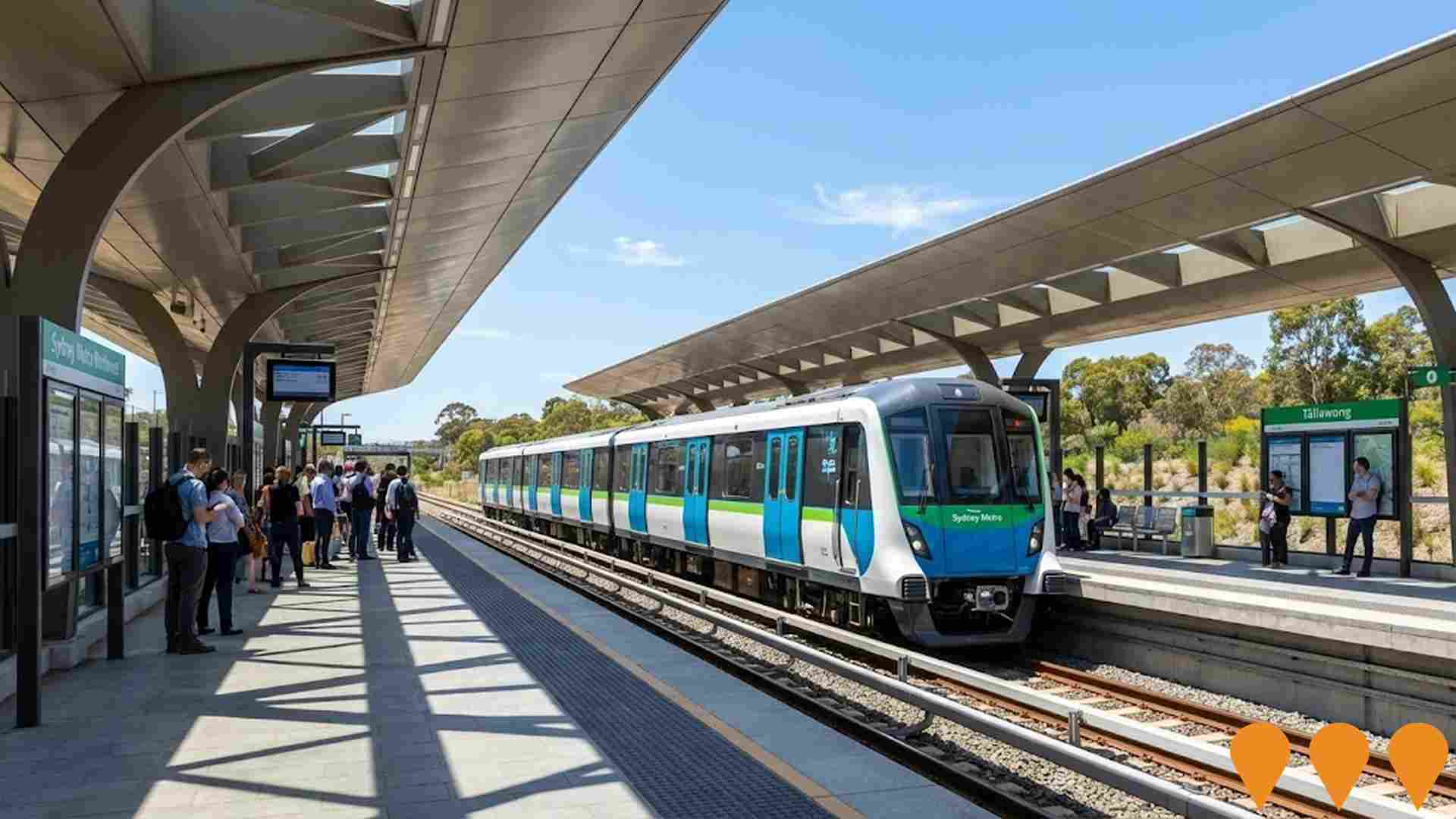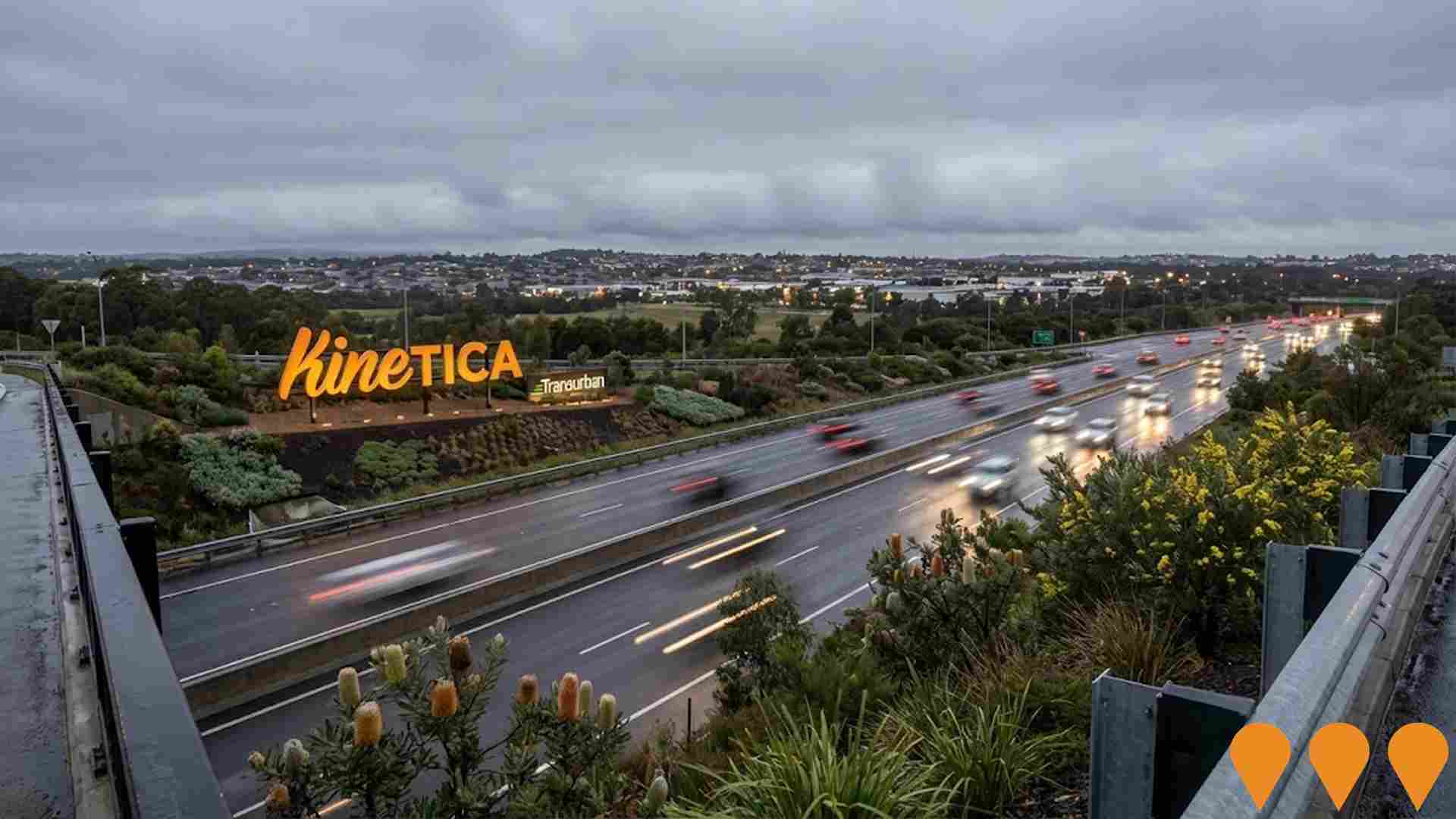Chart Color Schemes
est. as @ -- *
ABS ERP | -- people | --
2021 Census | -- people
Sales Activity
Curious about local property values? Filter the chart to assess the volume and appreciation (including resales) trends and regional comparisons, or scroll to the map below view this information at an individual property level.
Find a Recent Sale
Sales Detail
Population
Acacia Gardens has shown very soft population growth performance across periods assessed by AreaSearch
Acacia Gardens' population, as per AreaSearch's analysis, was approximately 3,714 as of August 2025. This figure represents an increase of 46 individuals (1.3%) since the 2021 Census, which reported a population of 3,668 people. The change is inferred from the estimated resident population of 3,714 from the ABS as of June 2024 and an additional 17 validated new addresses since the Census date. This results in a population density ratio of 3,909 persons per square kilometer, placing Acacia Gardens among the top 10% of locations assessed by AreaSearch, indicating high demand for land in the area. Population growth was primarily driven by overseas migration, contributing approximately 57.4% of overall population gains during recent periods.
AreaSearch is adopting ABS/Geoscience Australia projections for each SA2 area, released in 2024 with a base year of 2022, and NSW State Government's SA2 level projections for areas not covered by this data, released in 2022 with a base year of 2021. Growth rates by age group from these aggregations are applied to all areas for years 2032 to 2041. Projections indicate a decline in overall population over this period, with the area's population expected to decrease by 104 persons by 2041. However, growth is anticipated among specific age cohorts, notably the 85 and over age group, projected to expand by 141 people.
Frequently Asked Questions - Population
Development
The level of residential development activity in Acacia Gardens is very low in comparison to the average area assessed nationally by AreaSearch
Acacia Gardens has seen approximately six new homes approved annually. Over the past five financial years, from FY21 to FY25, around 30 homes were approved, with zero approvals so far in FY26.
The population decline during this period suggests that new supply has likely been keeping pace with demand, providing good choices for buyers. The average expected construction cost value of new dwellings is $1,050,000, indicating a focus on the premium market and high-end developments compared to Greater Sydney's regional average. Acacia Gardens records significantly lower building activity, 93.0% below the regional average per person, which generally supports stronger demand and values for established properties. This is also lower than the national average, reflecting market maturity and possible development constraints. Recent development has consisted entirely of detached dwellings, maintaining the area's suburban identity with a concentration of family homes suitable for buyers seeking space.
The location has approximately 2226 people per dwelling approval, indicating an established market. With population expected to remain stable or decline, Acacia Gardens should see reduced pressure on housing, potentially presenting opportunities for buyers.
Frequently Asked Questions - Development
Infrastructure
Acacia Gardens has very high levels of nearby infrastructure activity, ranking in the top 20% nationally
No local infrastructure projects have been identified by AreaSearch that could impact the area. Key projects include Blacktown and Mount Druitt Hospitals Expansion Stage 2, Securing Our Water Supply - Quakers Hill to Prospect, Bella Vista and Kellyville TOD Accelerated Precincts, and Marayong South Urban Renewal Precinct.
Professional plan users can use the search below to filter and access additional projects.
INFRASTRUCTURE SEARCH
 Denotes AI-based impression for illustrative purposes only, not to be taken as definitive under any circumstances. Please follow links and conduct other investigations from the project's source for actual imagery. Developers and project owners wishing us to use original imagery please Contact Us and we will do so.
Denotes AI-based impression for illustrative purposes only, not to be taken as definitive under any circumstances. Please follow links and conduct other investigations from the project's source for actual imagery. Developers and project owners wishing us to use original imagery please Contact Us and we will do so.
Frequently Asked Questions - Infrastructure
Sydney Metro West
A $27 billion, 24-kilometre underground metro railway doubling rail capacity between Greater Parramatta/Westmead and the Sydney CBD. Features 9 fully accessible, air-conditioned, driverless stations: Westmead, Parramatta, Sydney Olympic Park, North Strathfield, Burwood North, Five Dock, The Bays, Pyrmont, and Hunter Street. Tunneling on the western section (Pyrmont to Westmead) is complete, as of December 2025, with final TBMs heading towards Hunter Street. The project is supporting employment growth and is targeting a 2032 opening.
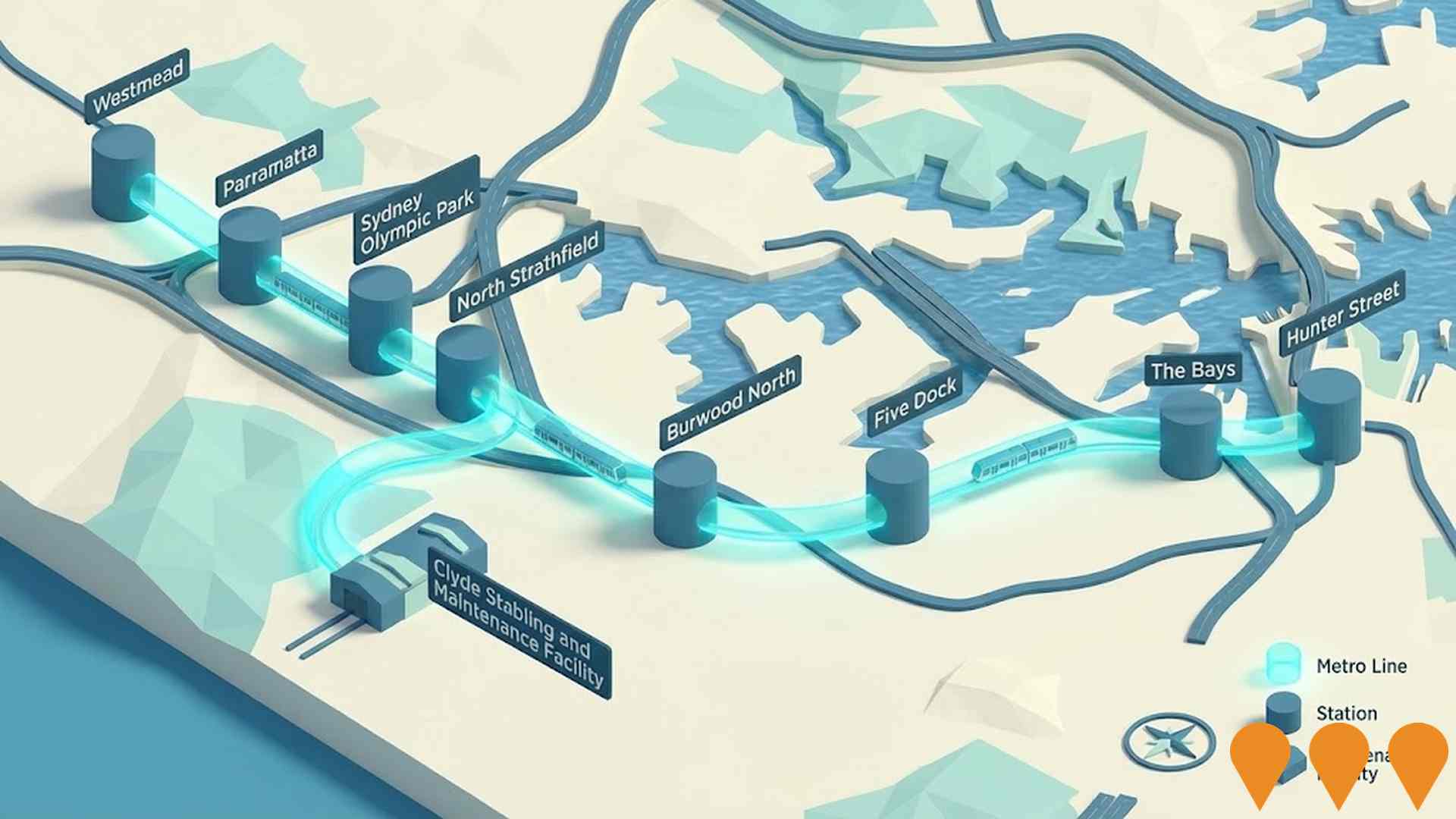
Blacktown and Mount Druitt Hospitals Expansion Stage 2
Stage 2 expansion and redevelopment of Blacktown and Mount Druitt Hospitals delivering a new clinical services building at Blacktown Hospital with approximately 200 additional inpatient beds, expanded emergency department, new operating theatres, interventional suites, medical imaging, ambulatory care, and paediatric services. Mount Druitt Hospital receives satellite upgrades including expanded cancer and renal services. Part of a $1.1 billion total investment across both stages (Stage 1 completed 2022).

Securing Our Water Supply - Quakers Hill to Prospect
Sydney Water project to deliver purified recycled water for drinking by expanding the Quakers Hill Water Recycling Plant, building a new advanced water treatment plant, and constructing pipelines to Prospect Reservoir. Will provide a climate-independent water source supporting up to 25% of Greater Sydney's needs by 2056 and enhancing drought resilience.

Securing Our Water Supply - Quakers Hill to Prospect (Purified Recycled Water Scheme)
Sydney Water is delivering advanced treatment upgrades at Quakers Hill Water Resource Recovery Facility and a new Purified Recycled Water (PRW) plant. Treated water will be transferred via a new pipeline to Prospect Reservoir to supplement Sydney's drinking water supply. The project is a key drought and climate-resilient water security initiative for Greater Sydney.

Lakeview Private Hospital
Premier multidisciplinary private hospital located on the shore of Norwest Lake in Northwest Sydney, providing exceptional patient-centered care including inpatient and day program rehabilitation, comprehensive surgical services, and specialist treatments. Established in 2015 and owned by specialist doctors with a 'Patients First' philosophy. In February 2025, a brand new Cancer Care and Infusion Centre was opened, offering advanced anti-cancer therapies and infusions.
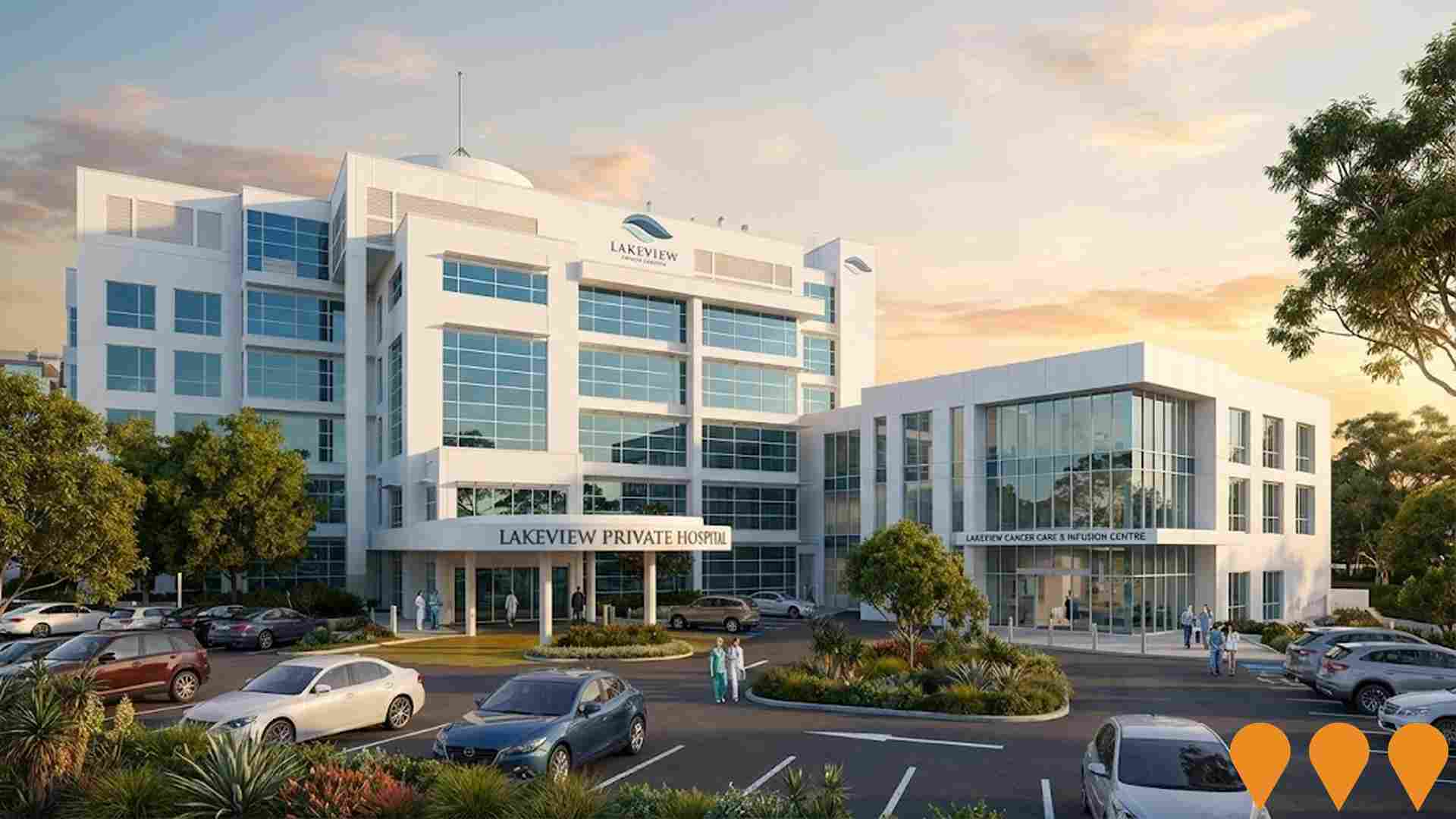
Rouse Hill Hospital
New $910 million public hospital serving Sydney's north-west growth corridor. 300+ beds, emergency department, maternity, ICU, operating theatres, paediatrics, renal dialysis, medical imaging and integrated digital health. First major adult public hospital built in Western Sydney in over 40 years. SSDA for main works lodged and on public exhibition until 10 December 2025. Early works contractor appointment imminent. Main construction expected to start late 2025/early 2026, with staged opening from 2028.
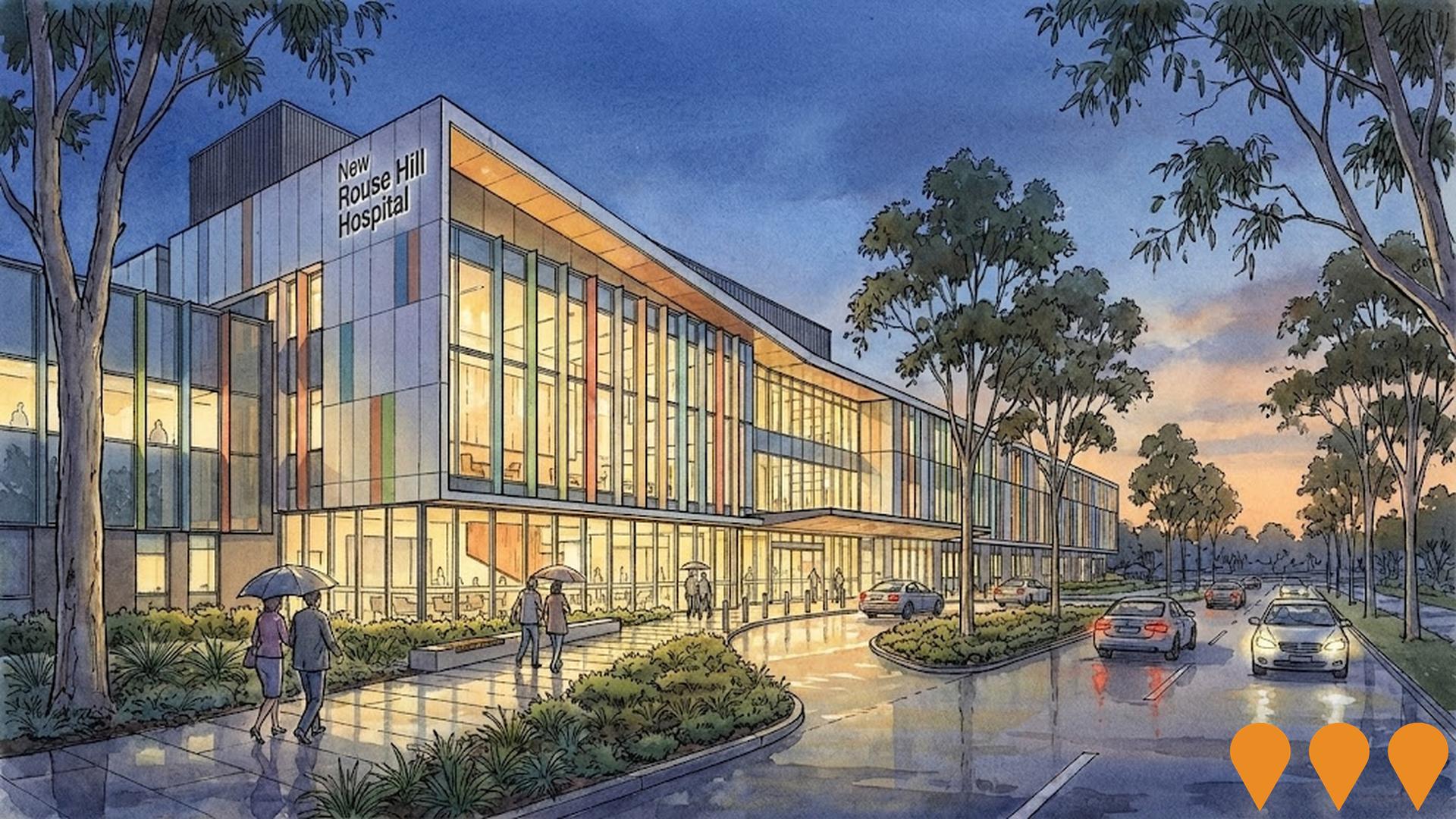
Bella Vista and Kellyville TOD Accelerated Precincts
State-led Transport Oriented Development (TOD) Accelerated Precinct enabling capacity for 4,600 new homes and 3,800 jobs around Bella Vista and Kellyville Metro stations. Rezoning effective 27 November 2024 includes mandatory affordable housing contributions of 3-10%, new public open spaces, active transport links, community infrastructure, a flagship business hub at Bella Vista, and a local neighbourhood centre at Kellyville.
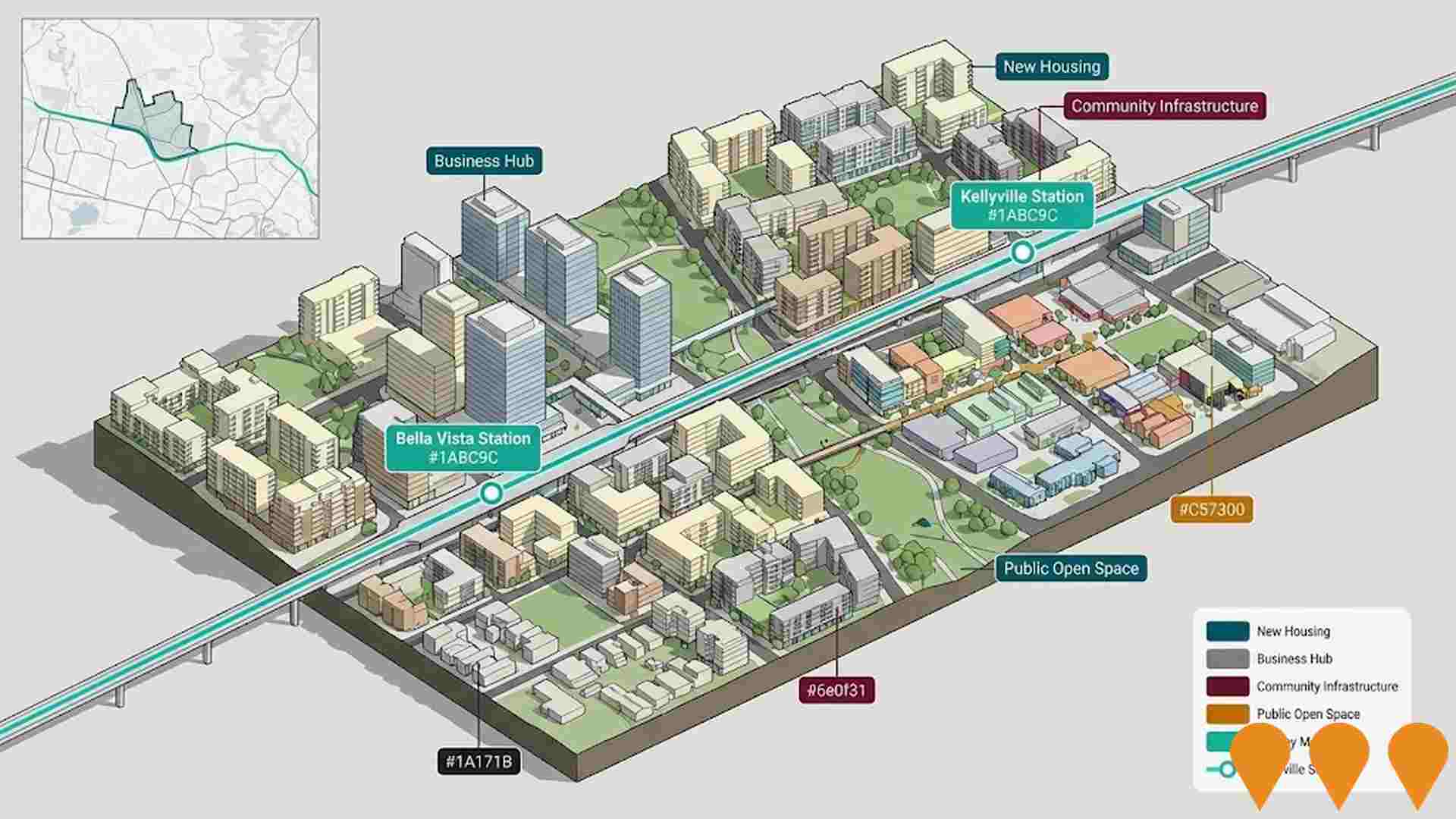
Blacktown City Council WestInvest Program
Blacktown City Council is delivering a $150 million portfolio of community infrastructure projects funded through the NSW Government's WestInvest program. Projects include new and upgraded sports facilities, parks, community centres, libraries, aquatic facilities, cycleways and road upgrades across the entire Blacktown Local Government Area to meet the needs of one of Australia's fastest-growing communities.
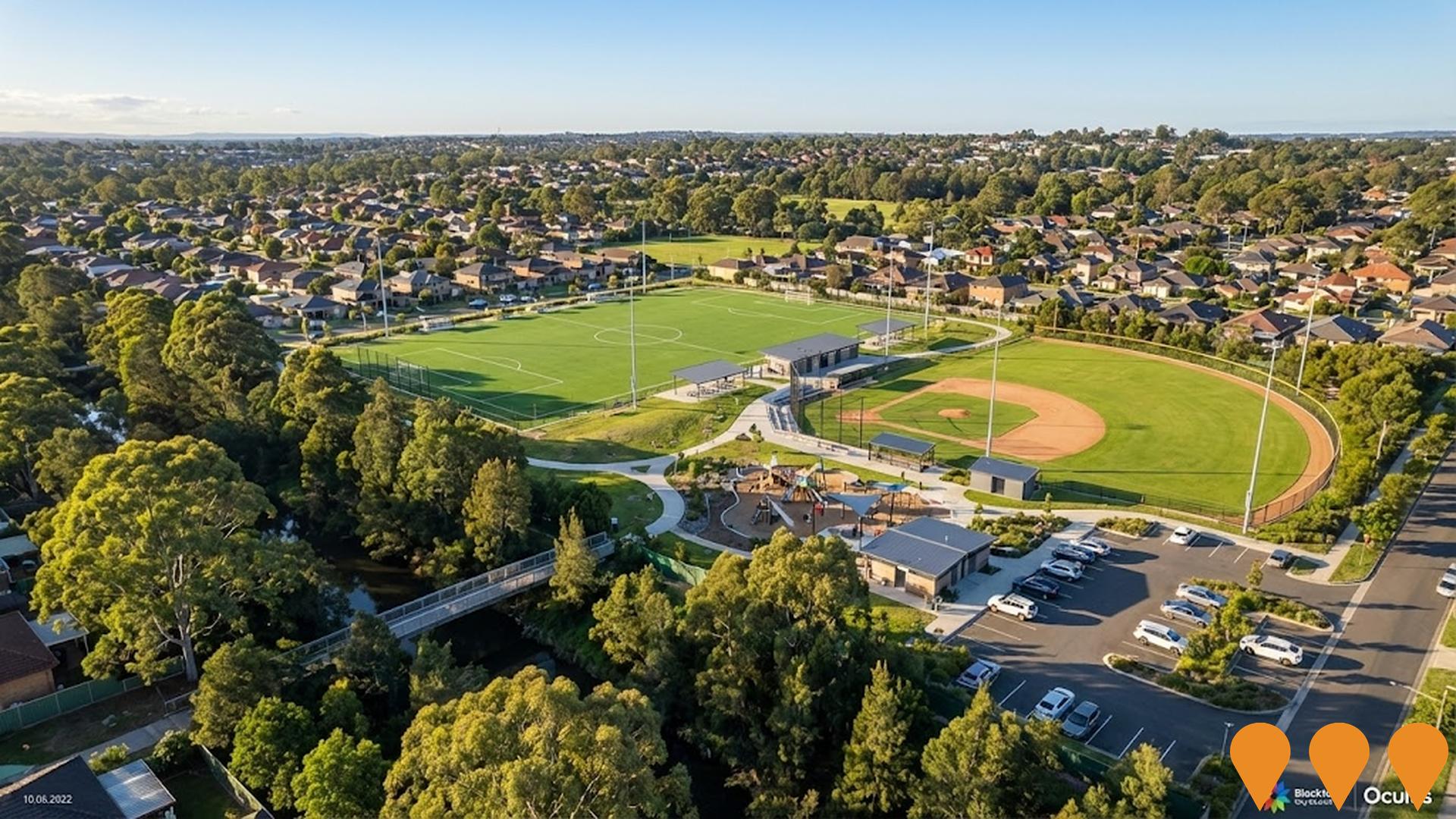
Employment
AreaSearch analysis of employment trends sees Acacia Gardens performing better than 90% of local markets assessed across Australia
Acacia Gardens has an educated workforce with significant professional services representation. Its unemployment rate is 1.5% as of the past year.
Employment growth in the area was estimated at 6.6% over this period. As of June 2025, 2,540 residents are employed, with an unemployment rate of 2.7%, below Greater Sydney's rate of 4.2%. Workforce participation is high at 72.8%, compared to Greater Sydney's 60.0%. Leading employment industries include health care & social assistance, retail trade, and professional & technical services.
The area specializes in public administration & safety, with an employment share 1.4 times the regional level. However, professional & technical services have limited presence at 8.9% compared to the regional 11.5%. Employment opportunities locally may be limited, as indicated by the Census working population vs resident population count. In the past year, employment increased by 6.6% alongside labour force growth of 6.5%, keeping unemployment relatively stable. In contrast, Greater Sydney had employment growth of 2.6% and labour force growth of 2.9%. National employment forecasts from May 2025 project a 6.6% increase over five years and 13.7% over ten years. Applying these projections to Acacia Gardens' employment mix suggests local growth of approximately 6.6%% over five years and 13.6% over ten years, though this is a simple extrapolation for illustrative purposes and does not account for localized population projections.
Frequently Asked Questions - Employment
Income
Income metrics indicate excellent economic conditions, with the area achieving higher performance than 75% of national locations assessed by AreaSearch
AreaSearch's latest postcode level ATO data for financial year 2022 shows Acacia Gardens had a median taxpayer income of $59,977 and an average of $69,267. Nationally, the median was lower at $54,831 with an average of $72,102. In Greater Sydney, the median was $56,994 and the average was $80,856. By September 2025, estimated incomes would be approximately $67,540 (median) and $78,002 (average), based on Wage Price Index growth of 12.61% since financial year 2022. According to the 2021 Census, Acacia Gardens' household, family, and personal incomes rank highly nationally, between the 83rd and 95th percentiles. Income distribution shows that 33.8% of locals (1,255 people) fall into the $1,500 - 2,999 category, similar to surrounding regions where 30.9% occupy this range. Economic strength is evident with 45.3% of households earning high weekly incomes exceeding $3,000, supporting elevated consumer spending. High housing costs consume 15.9% of income, but strong earnings place disposable income at the 94th percentile nationally. The area's SEIFA income ranking places it in the 9th decile.
Frequently Asked Questions - Income
Housing
Acacia Gardens is characterized by a predominantly suburban housing profile, with above-average rates of outright home ownership
Acacia Gardens' dwelling structure, as per the latest Census, consisted of 85.6% houses and 14.4% other dwellings (semi-detached, apartments, 'other' dwellings), compared to Sydney metro's 84.9% houses and 15.1% other dwellings. Home ownership in Acacia Gardens stood at 21.3%, with mortgaged dwellings at 58.2% and rented ones at 20.5%. The median monthly mortgage repayment was $2,484, below Sydney metro's average of $2,700. Median weekly rent in Acacia Gardens was $540, aligning with the Sydney metro figure. Nationally, Acacia Gardens' mortgage repayments were higher at $2,484 compared to Australia's average of $1,863, while rents were substantially above the national figure of $375.
Frequently Asked Questions - Housing
Household Composition
Acacia Gardens features high concentrations of family households, with a lower-than-average median household size
Family households constitute 89.2% of all households, including 57.6% couples with children, 19.1% couples without children, and 11.0% single parent families. Non-family households make up the remaining 10.8%, with lone person households at 9.4% and group households comprising 1.2%. The median household size is 3.2 people, which is smaller than the Greater Sydney average of 3.3.
Frequently Asked Questions - Households
Local Schools & Education
Acacia Gardens shows strong educational performance, ranking in the upper quartile nationally when assessed across multiple qualification and achievement indicators
The area's university qualification rate is 39.5% among residents aged 15+, surpassing the Australian average of 30.4% and NSW's average of 32.2%. Bachelor degrees are the most common at 26.2%, followed by postgraduate qualifications (11.0%) and graduate diplomas (2.3%). Vocational credentials are also prevalent, with 29.0% of residents aged 15+ holding such qualifications - advanced diplomas (11.2%) and certificates (17.8%).
Educational participation is high at 30.5%, including 10.9% in primary education, 8.5% in secondary education, and 5.3% pursuing tertiary education. Quakers Hill East Public School serves Acacia Gardens with an enrollment of 678 students. The area has above-average socio-educational conditions (ICSEA: 1094) and offers primary education through its one school, with secondary options available nearby.
Frequently Asked Questions - Education
Schools Detail
Nearby Services & Amenities
Transport
Transport servicing is good compared to other areas nationally based on assessment of service frequency, route connectivity and accessibility
Transport analysis in Acacia Gardens shows 20 active transport stops operating, all of which are bus stops. These stops are served by 30 individual routes that collectively facilitate 1,197 weekly passenger trips. Transport accessibility is rated as excellent, with residents typically located 132 meters from the nearest stop.
Service frequency averages 171 trips per day across all routes, equating to approximately 59 weekly trips per individual stop.
Frequently Asked Questions - Transport
Transport Stops Detail
Health
Acacia Gardens's residents boast exceedingly positive health performance metrics with younger cohorts in particular seeing very low prevalence of common health conditions
Acacia Gardens shows excellent health outcomes, notably for younger age groups with low prevalence rates for common conditions. Approximately 54% of its total population (~2,020 people) has private health cover, compared to Greater Sydney's 58.5%.
Asthma and diabetes are the most prevalent medical conditions in Acacia Gardens, affecting 6.4% and 5.2% of residents respectively. About 77.4% of residents report having no medical ailments, slightly lower than Greater Sydney's 80.0%. The area has a higher proportion of seniors aged 65 and over at 11.6%, with 430 people falling into this category compared to Greater Sydney's 7.8%. Despite this, health outcomes among seniors in Acacia Gardens are above average but require further attention.
Frequently Asked Questions - Health
Cultural Diversity
Acacia Gardens is among the most culturally diverse areas in the country based on AreaSearch assessment of a range of language and cultural background related metrics
Acacia Gardens has a high level of cultural diversity, with 45.5% of its population born overseas and 47.9% speaking a language other than English at home. Christianity is the dominant religion in Acacia Gardens, comprising 49.7% of the population. Hinduism, however, is overrepresented compared to Greater Sydney, making up 15.7% of Acacia Gardens' population versus 20.2%.
The top three ancestry groups are Other (21.1%), Australian (15.9%), and Indian (14.2%). Notably, Filipino (5.1%) is overrepresented compared to the regional average of 6.2%, Spanish (1.1%) is also higher than the regional average of 0.6%, and Maltese (2.5%) has a higher representation than the regional average of 1.7%.
Frequently Asked Questions - Diversity
Age
Acacia Gardens's population is slightly younger than the national pattern
Acacia Gardens has a median age of 36 years, nearly matching Greater Sydney's average of 37 years, which is slightly below Australia's median age of 38 years. Compared to Greater Sydney, Acacia Gardens has a higher proportion of residents aged 35-44 (18.1%) but fewer residents aged 25-34 (10.9%). Between the 2021 Census and the current time, the population aged 15-24 increased from 12.6% to 14.6%, while the 75-84 age group grew from 2.3% to 4.1%. Conversely, the 25-34 age group decreased from 13.2% to 10.9%, and the 5-14 age group dropped from 15.5% to 13.9%. By 2041, demographic modeling suggests significant changes in Acacia Gardens' age profile. The population aged 85 and above is projected to grow by 330%, adding 131 residents to reach a total of 171. Residents aged 65 and above will drive 82% of the population growth, indicating strong demographic aging trends. However, the populations aged 65-74 and 25-34 are expected to decline.

